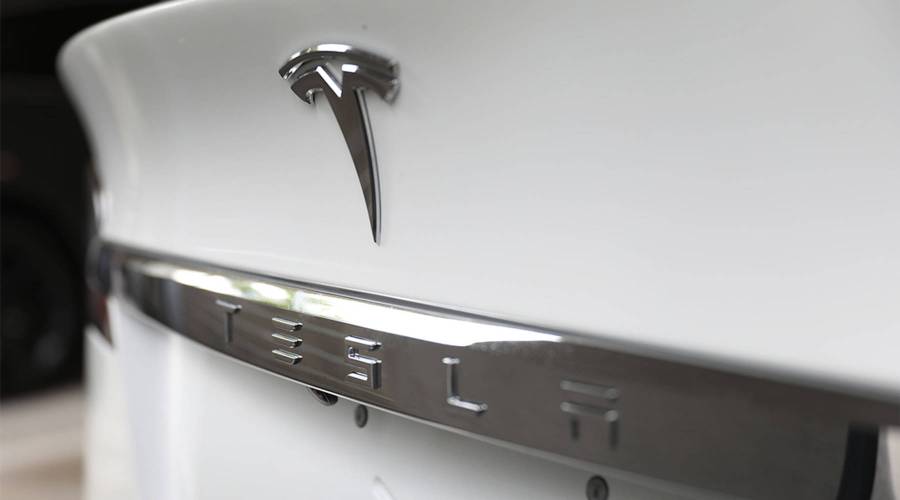Tesla is moving ahead on driverless tech while others are slowing down

Tesla announced late last week that all its cars will now come with its semi-autonomous driving technology, called Autopilot, as a standard option. Another way to look at it is that you can’t buy a Tesla without some self-driving features, even if it would cost less. Tesla is at the same time pushing hard toward fully self-driving cars. It will hold an autonomy investor day Aprill 22 to tell shareholders how it plans to get there.
But other companies are pulling back. Ford said last week that driverless tech is taking longer than expected, and when self-driving cars do appear it will be in limited locations. Uber, in its IPO filing last week, also said there would be “a long period of hybrid autonomy” where limited self-driving cars exist alongside a fleet of human drivers.
Host Molly Wood talked with Jack Stewart, Marketplace’s transportation reporter. He said next week is about Tesla staking its claim as the self-driving leader. The following is an edited transcript of their conversation.
Jack Stewart: Tesla is obviously keen to make a good impression and help keep that image that they like to have of being a company at the forefront of things. Nowadays a lot of other companies are working on autonomous tech too, so Tesla, which once had this great reputation as being a real leader here, is trying to regain that. I think they’re going to give us more detail about how they’re going to roll out the autonomous tech. At the moment they’re doing it bit by bit. They’re taking this approach of sending software updates to the cars and then giving them a little bit more ability.
Molly Wood: You say though that Tesla’s had this reputation as being a leader in this field, but it has not been without controversy. From referring to these capabilities as “autopilot” to some pretty high profile accidents, I would imagine there’s going to be some damage control here, too, right?
Stewart: Yeah, absolutely. I’ve actually been driving recently a Tesla with its very latest version. They call it “Navigate on Autopilot,” which basically allows the car to make its own decisions about things like lane changes. So you get on the freeway, you put on autopilot and then the car will decide when it wants to put on the signal. It will move into the next lane and then turn the signal off. It will do this according to speed, it will do this to stay on your route and it will do this to take exits.
Wood: Critics call this the mushy middle of automation, and there are people who really consider this a very dangerous time. Is Tesla putting the industry at risk by pushing the envelope so quickly when it comes to semi-autonomous features?
Stewart: That was always the concern and the criticism that was leveled at them in the early days. People were very worried about the first fatality, that it would then turn people against this technology. That doesn’t seem to have really happened so far. Then we have that other good example of the Uber self-driving car in Arizona that crashed into and killed a pedestrian pushing a bike. That did put Uber’s self driving program back a fair amount, but they are back on the roads again now. It seems that the public at large is willing to accept a little bit of risk. But I think we’re still a long way from computers being better right now.
Related links: more insight from Molly Wood
A little more on how far Tesla is starting to drift from the rest of the industry: When Tesla announced its autonomy investor day in a blog post, the company said it’s made significant progress toward self-driving features and will be able to use remote software updates to upgrade your semi-autonomous Tesla to a fully self-driving car.
In February of this year, CEO Elon Musk said that a self-driving Tesla should be able to “find you in a parking lot, pick you up and take you all the way to your destination without an intervention” this year. That caused some auto industry analysts to call the statements reckless. The CEO of the retailer AutoNation said he thought Musk’s promises about self-driving capabilities were almost unethical. We’ll see what everyone says after investor day.
And a Reuters-Ipsos poll from earlier this month found that half of American adults don’t trust self-driving cars and two-thirds wouldn’t pay more for self-driving features.
The future of this podcast starts with you.
Every day, the “Marketplace Tech” team demystifies the digital economy with stories that explore more than just Big Tech. We’re committed to covering topics that matter to you and the world around us, diving deep into how technology intersects with climate change, inequity, and disinformation.
As part of a nonprofit newsroom, we’re counting on listeners like you to keep this public service paywall-free and available to all.
Support “Marketplace Tech” in any amount today and become a partner in our mission.












